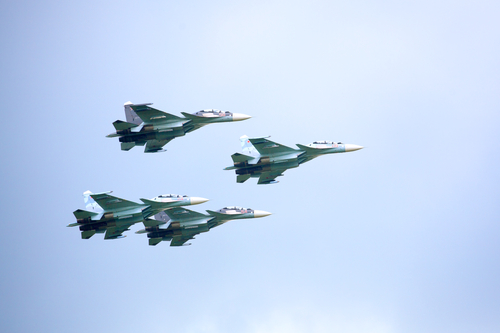
Modern fighter jets, while embodying the pinnacle of technology and agility, do not possess the “bulletproof” armor one might expect from the marvels of military aviation.

The evolution of aerial combat and the advancement of weaponry have largely rendered the concept of armoring these high-speed aircraft obsolete, except for some specialized ground attack planes.

From the outset, it’s crucial to clarify that the majority of modern fighter jets forgo traditional armor plating. The rationale behind this design choice is grounded in aerodynamic performance—speed and maneuverability take precedence over armor.

The heavy metal required to shield an aircraft from projectiles would severely hamper its ability to perform in the skies, rendering it less competitive in the ever-advancing theater of aerial warfare.

In the case of specific ground-attack aircraft, such as the A-10 Thunderbolt II and the Russian Su-25, a different approach is adopted. These subsonic aircraft, designed to fly closer to the ground and therefore within the range of small arms fire, integrate features aimed at protecting the pilot.

For instance, the cockpit of the A-10 is protected by a 1,200-pound titanium shell called a ‘bathtub.’ During testing, the bathtub could withstand direct hits from 23 mm canon fire and indirect hits from 57 mm shell fragments.

Russia’s Sukhoi Su-25, on the other hand, utilizes a titanium shell of similar design to shield its pilots from ground-based threats.

However, this level of protection is an exception rather than a rule. As World War Two progressed, aircraft started to incorporate more protective measures, such as armored plates and reinforced cockpit glass. But with the advent of surface-to-air and air-to-air missiles, the landscape of aerial combat shifted dramatically.

The inefficiency of anti-aircraft guns against high-flying, fast-moving targets led to the development of missiles like the S-25 Berkut and the AIM-9B Sidewinder, which rendered traditional armor ineffective against the high-velocity impacts they could deliver.

Moreover, the redundancy of systems has become a preferred method of ensuring survivability in modern jets.

As an example, the F-16, known for its roles in ground support missions, employs multiple flight computers and redundant hydraulic systems, though it lacks armor plating.

It’s designed to endure system failures rather than direct hits from enemy fire.

Similarly, the heavy S-400 surface-to-air missile uses a fragmentation warhead that operates at hypervelocity impacts, where mass and function outweigh the benefits of armor.

As a result, most modern fighter aircraft do not incorporate comprehensive armor protection. Instead, redundancy in critical systems and high-speed maneuverability provide a different kind of defense.

The Su-27 family, for instance, includes an armor plate between its engines to prevent one from damaging the other in the event of a hit. Close Air Support aircraft also incorporate some armor for the pilot due to their vulnerability to ground fire.
Relevant articles:
– Are Modern Fighter Jets Bulletproof?, Simple Flying
– Does the F-16 have any armor at all?, stackexchange.com
– Are modern fighter jets bulletproof and armored?, Aviation Stack Exchange, Feb 1, 2019
